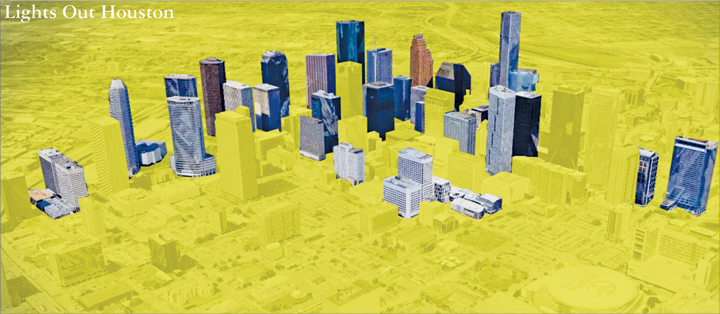Experts estimate that two-thirds of Americans can no longer see the Milky Way, one of the great marvels of the natural world. Out of more than eight thousand stars that the unaided eye can discern, most urbanites are fortunate to now be able to see perhaps 500 stars.Of course, the stars are still there. It is just that the glare of our many artificial lights has overwhelmed the natural glories of the night sky. Millions of incandescent, fluorescent, halogen, neon, sodium, and mercury vapor lamps illuminate our homes, offices, parking lots and streets, but also spill over to light the heavens.
Fortunately, there are many efforts to cut back on this “skyglow”, and the related waste of energy that goes with the lost lighting. The state of Texas has enacted statutes to protect light-sensitive observatories and military bases, while numerous towns and cities have passed ordinances to minimize unnecessary lighting. Meanwhile, some neighborhood and landowner associations have undertaken voluntary efforts to find ways to save energy and reduce light pollution.
The non-profit group, Lights Out Houston, provides one particularly exciting example of an effort to reduce light waste and loss. The non-profit has persuaded many owners and users of Houston’s downtown skyscrapers to simply turn off their lights while the offices are unoccupied. Please take a look at the accompanying map to see the many buildings that are a part of the effort.
Map source:
Bergman, Andy. 2013. Co-founder, Lights out Houston. Personal communication, September 2013.
Selected references:
Bower, Joe. 2000. “The Dark Side of Night”, in Audubon, March-April 2000.
Brox, Jane. 2010. Brilliant: The Evolution of Artificial Light. Mariner Books.

